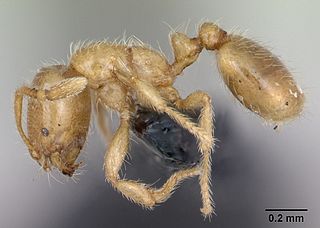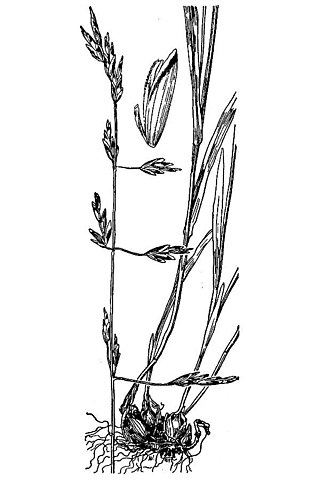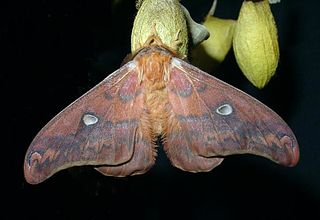
Vänern is the largest lake in Sweden, the largest lake in the European Union and the third-largest lake in Europe after Ladoga and Onega in Russia. It is located in the provinces of Västergötland, Dalsland, and Värmland in the southwest of the country. With its surface located at 44 metres (144 ft) with a maximum depth of 106 metres (348 ft), the lowest point of the Vänern basin is at 62 metres (203 ft) below sea level. The average depth is at a more modest 28 metres (92 ft), which means that the average point of the lake floor remains above sea level.

Solenopsis fugax is a myrmicine ant of the genus Solenopsis.

Amaurosis fugax is a painless temporary loss of vision in one or both eyes.

The saddletail grouper, also known as black cod or black rock-cod in Australia, and as saddle-tailed grouper or spotted black grouper in New Zealand, is a large marine fish of the family Serranidae. It is found off the coastline of southeastern Australia and northern New Zealand, generally inhabiting near-shore rock and coral reefs at depths down to 50 metres. Its main range comprises the southeast coastline of Australia, in the state of New South Wales; New Zealand populations are suspected to be nonbreeding, so are a result of drifting larvae. However, spawning aggregations have been recorded off northern New Zealand.

Palinurus elephas is a commonly caught species of spiny lobster from the East Atlantic Ocean and the Mediterranean Sea. Its common names include European spiny lobster, crayfish or cray, crawfish, common spiny lobster, Mediterranean lobster and red lobster.
Leucostethus fugax, also known as Pastaza rocket frog, is a species of frog in the family Dendrobatidae. It is endemic to the eastern slopes of the Cordillera Oriental, southern Ecuador. Although originally only known from the valley of Pastaza River, it is now known to be more widespread. Its known range extends close to the Peruvian border and its true range may include Peru.

Euspira catena, previously known as Natica catena, common name the large necklace shell, is a medium-sized species of predatory sea snail, a marine gastropod mollusc in the family Naticidae, the moon snails.

Mya truncata, common name the blunt gaper or truncate softshell, is a species of edible saltwater clam, a marine bivalve mollusk in the family Myidae.

Melica fugax is a species of grass known by the common names little oniongrass and little melic. It is native to western North America where it usually grows in volcanic soils in forest and plateau habitat from British Columbia to the Sierra Nevada and North California Coast Ranges in California.

Calyptraea chinensis, common name the Chinese hat snail or Chinese hat shell, is a species of small sea snail, a marine gastropod mollusk in the family Calyptraeidae, the slipper snails or slipper limpets, cup-and-saucer snails, and Chinese hat snails.

Sycon ciliatum is a species of calcareous sponge belonging to the family Sycettidae.

The Malaysian hawk-cuckoo or Malay hawk-cuckoo is a bird in the family Cuculidae formerly considered conspecific with Hodgson's hawk-cuckoo and the rufous hawk-cuckoo. All three species were previously assigned as Cuculus fugax.

Myra fugax is a species of crabs in the family Leucosiidae.

Dythemis fugax, the checkered setwing, is a species of skimmer in the dragonfly family Libellulidae. It is found in Central America and North America.
Fontainea fugax is a shrub endemic to Queensland, in the family, Euphorbiaceae, growing up to 4 m. In 1997, F. fugax was considered "endangered" having been found in only in the central Burnett district and within an endangered community, threatened by weeds, repeated fires and clearing.
Actebia fugax is a species of moth belonging to the family Noctuidae.

Rhodinia fugax, the squeaking silkmoth, is a moth in the family Saturniidae. It was described by Arthur Gardiner Butler in 1877. It is native to Korea, Japan, China, and the Russian Far East.

Volvarina fugax is a species of sea snail, a marine gastropod mollusk in the family Marginellidae, the margin snails.














